13 Greek Islands Worth to Visit in 2021
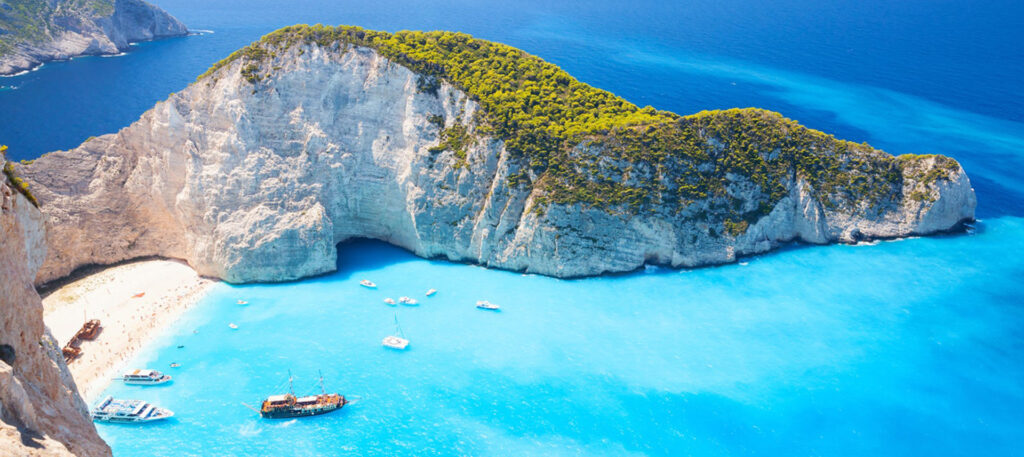
13 Greek Islands Worth to Visit in 2021. Crystal clear blue beaches, historical islands, adorable landscapes and more… Discover Greece!!!
01. ITHACA
Best Greek island for: A mythical retreat for lovers and loners
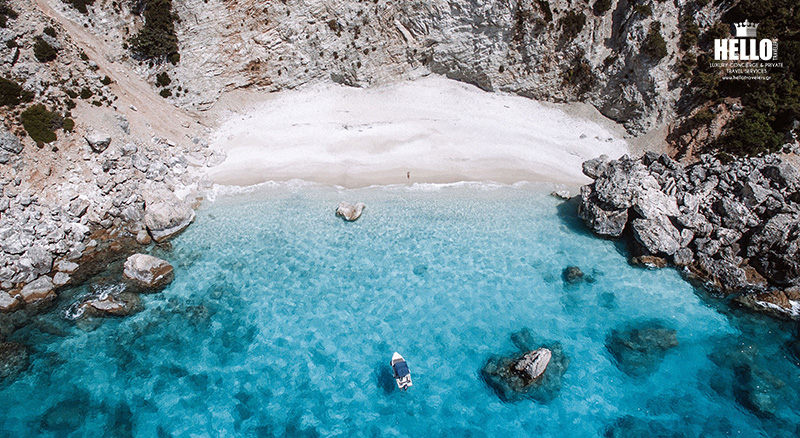
Despite its legendary stature, the homeland of Homer’s hero, Odysseus, remains surprisingly under the radar. Ithaca’s turquoise and emerald coves are popular with the sailing set, but few visitors venture into the forested hills. So you might be the only person exploring the eighth-century BC ruins of Odysseus’ palace, or making the heady trek to the church of Anogi, covered in Byzantine frescoes (ask for the key at the village coffee shop, where the owner will cook you a set menu of whatever is available – maybe a tomato salad, some local cheese and braised goat – straight from her garden or neighbours’ fields).
From Anogi, it’s an exhilarating two-hire hike down to Kioni, a miniature port where you’ll find Spavento, the perfect pier-side café-bar. Go any time of day or night for ice-cream sundaes, excellent cocktails, and a soundtrack to make your heart sing. The waterside tavernas at the drowsy fishing port of Frikes are unfailingly delightful, especially Ageri. The deep, sheltered harbour town of Vathy is barely livelier, but the mood can be deliciously mischievous at Mylos bar. Beaches are mostly small and pebbly, but the sea is as clear and refreshing as gin. Authentic, unspoiled and infuriatingly (or gratifyingly) hard to reach, rugged little Ithaca is somewhere you can still disappear.
02. FOLEGANDROS
Best Greek island for: Authenticity with a bohemian buzz
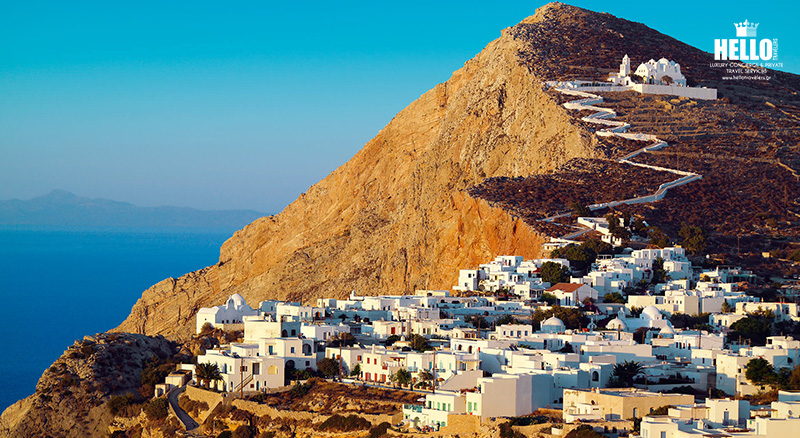
The village square should be your first port of call on any Greek island: settle into your favourite café, pick up local gossip, and adjust to the languid pace of life. On Folegandros, this presents a challenge: the cliff-hanger capital, Hora, has not one but three squares, each brimming with a jumble of cafés, tavernas and dinky raki bars. We recommend (Pounta), where the Danish owner makes (and sells) the lopsided cups and bowls in which your coffee and Greek yogurt are served. From Hora, zigzagging steps lead up, up and away to the only real landmark, Panagia church; make the pilgrimage at sunrise (perhaps after an all-nighter at dimunitive Astarti bar).
Folegandros – which means ‘iron hard’ in ancient Greek – is as barren as its name suggests. Fruit trees are protected from fierce winds by rings of stones. You won’t find sandy beaches lined with sunbeds; only limpid, pebbly coves, such as Katergo, Ambeli and Livadaki. Set in the rocks above Agios Nikolaos bay, Papalagi serves big fat prawns and whole grilled octopus on a wooden deck aligned with the horizon. Water taxis service some beaches in high season; otherwise you’ll have to scramble down rocky footpaths to cool off. On your way home, stop at Mimis or Synantisi in Ano Meria for the island speciality of matsata (goat or rabbit stew with hand-made pasta).
03. MYKONOS
Best of the Greek islands for: Decadent parties and five-star hotels
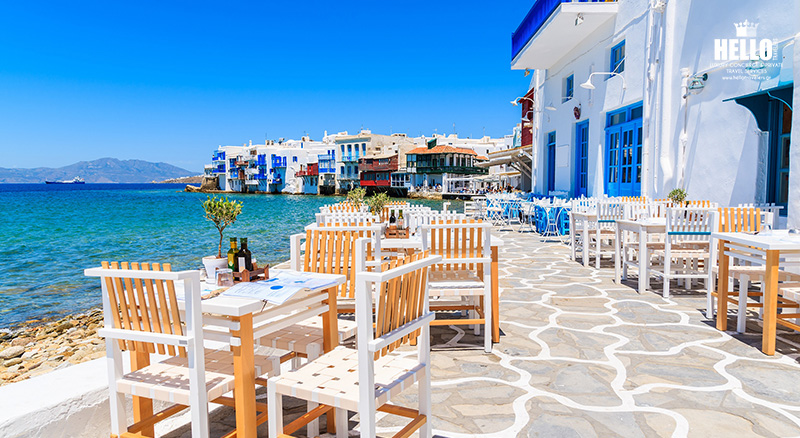
Mykonos had gay clubs and sunrise parties long before rave culture was even invented. Its bohemian allure hasn’t faded since the 1960s, although the once naked beaches now have nail bars, personal trainers and house music pumping out all hours. The influx of supermodels and superyachts has inspired hot new hotels and restaurants. The hippest place to show off your abs is Scorpios, a louche beach bar that puts Ibiza’s finest in the shade (book a cabana to watch the sunset). After hours, it’s always Astra, where you might find Keith Richards chatting up Karolina Kurkova. The gay crowd has dwindled, but drag queens and oiled bodybuilders make a splash at Jackie O, overlooking Super Paradise bay.
If the glitzy excess gets too much, escape to Fokos taverna for superfood salads and lamb chops, or Kiki’s, an off-grid grill-shack overlooking Agios Sostis bay, where even Naomi Campbell has to queue for a table. Or cruise over to the tiny island of Delos, an archaeological sanctuary that once thronged with 30,000 sun worshippers (the temple is dedicated to Apollo, the Greek god of light).
04. TINOS
Best for: Traditional villages and knockout tavernas
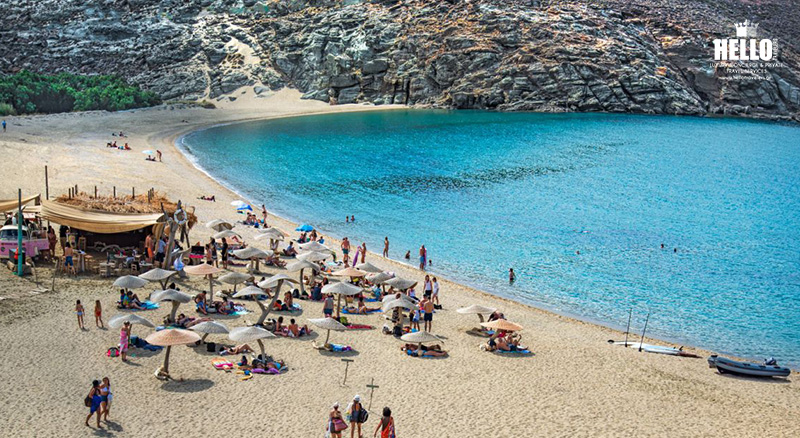
Tinos has more than 50 villages, each vying to be fairest of them all. In Pyrgos, famous for its marble craftsmen, sculpted birds and flowers decorate every doorway. In Volax, basket weavers squat outside cottages carved from giant boulders, seemingly flung from the heavens by Zeus in a fit of pique. There’s even a village called ‘love’, Agapi, where you can tuck into wild-fennel fritters at the only taverna. Tinos takes its food culture seriously: there are artichoke, caper and honey festivals. Marathia launched the island’s farm- (or fishing-boat-) to-table scene, elevating local ingredients into complex modern dishes. For a perfect meal in perfect surroundings, go for cuttlefish risotto and octopus caramelised in grape must at Thalassaki, served on the jetty in Isternia bay, then watch dusk bleed into the horizon from Exomeria bar.
Tinos is only 15 minutes from Mykonos, so it’s a wonder it isn’t overrun with tourists. The harbour is swarmed on 15 August, however, when Orthodox pilgrims flock here to kiss the icons at Panagia Evangelistria monastery, one of the holiest sites in Greece. Otherwise, the island is miraculously untouched. Solitary chapels and whimsical dovecotes stud thyme-scented hills, dropping to sandy bays whipped by the meltemi wind. There’s a nascent surfer scene on Kolibithra bay, where a VW camper van has been converted into a cute beach bar.
05. CRETE
Best for: Antiquities, active adventures and sunshine all year round
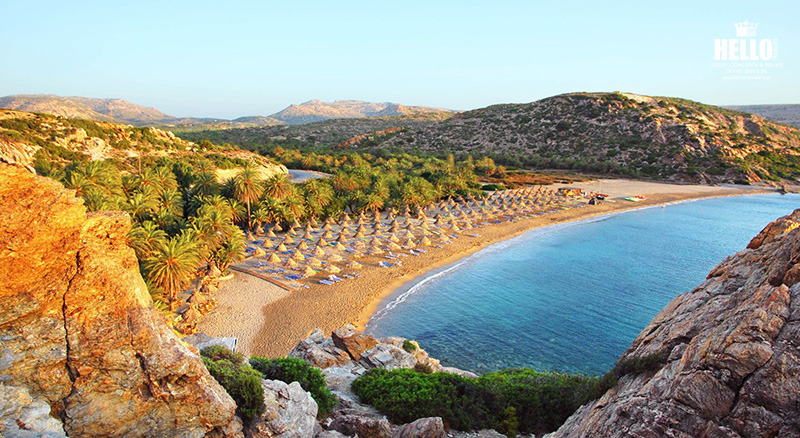
Greece’s largest island, the birthplace of Zeus, Crete has ancient ruins, snow-capped peaks and beaches galore. Sunshine is pretty much guaranteed year round, but spring is especially lovely for rambling and sightseeing. The Minoan palace of Knossos is glorious, despite the steady stream of coach parties (go early: it opens at 8am); but there are stunning ancient sites, such as Aptera and Malia, peppered all over the island. The 16km-long Samariá Gorge also teems with pilgrims, but there are 50 more canyons to explore, often with only the elusive kri-kri (wild goats) for company. One of the most staggeringly beautiful hikes is through the Aradena Gorge in the wild and rugged Sfakia region, ending at Marmara, a translucent cove on the Libyan Sea, for a cooling dip and lunch at one of Crete’s finest tavernas, Dialiskari.
With the exception of Elounda – a pocket of bling popular with oligarchs – the north-east coast is scarred by over-development. Head west to the Amari valley or Apokoronas for authentic villages surrounded by olive and orange groves. Or go south, where you’ll find the best beaches in Crete – try Ligres, Sougia, or Kedrodassos. Alternatively, take a back-to-nature break at Milia, a 17th-century hamlet powered entirely by solar energy. Everything on the organic menu is grown, caught or reared locally. In fact, it’s almost impossible not to eat well on Crete, which produces superb cheese, honey and olive oil, as well as delicious goat, rabbit and smoked-pork dishes. Time slows almost to a standstill in the mountain villages, where locals with formidable whiskers welcome you with shots of raki (Cretan grappa) for breakfast and celebrate saints’ days with a volley of gunshots. Even the road signs are peppered with bullet holes.
06. PATMOS
Best for: Stark mystique and show-stopping villas
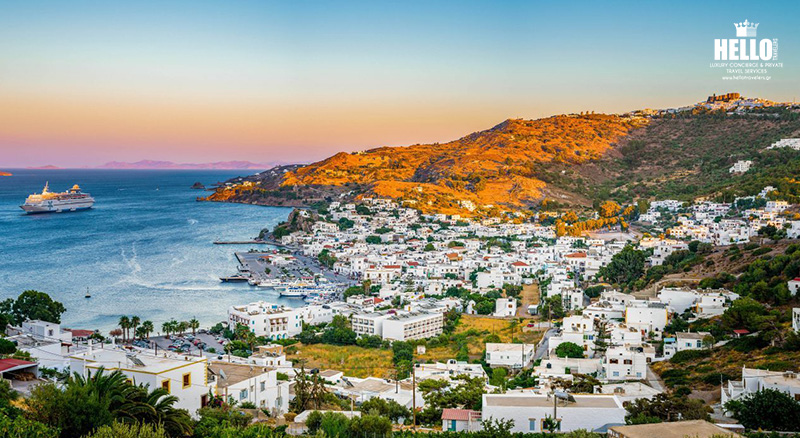
Patmos has an indefinable je ne sais quoi – an otherworldly quality that radiates from its crowning glory, the medieval monastery of St John. This turreted fortress, bursting with Byzantine relics, is named after John the Divine, who conjured up his apocalyptic revelations in a cave nearby. Pure-white Hora, a World Heritage Site, is where A-listers and fashion editors stay. High walls and heavy doors conceal magnificent mansions dating back to the 16th century. The almighty church has kept nightlife in check. If you must see and be seen, head to quietly glamorous Astivi or Stoa bar, on miniature Agia Lesvias square, in Hora. Beach life is generally languid and low-key; Psili Ammos and Livadi Geranou are our favourite hideouts. Dinner reservations are essential at Benetos, for Med-Asian fusion on an organic farm, and Lambi for grilled fish on a purple pebble beach.
Joining the Patmos in-crowd requires commitment. There’s no airport and it’s a nine-hour ferry journey from Athens, which keeps the hoi polloi at bay. Seriously reclusive types hop on a fishing boat from Patmos to Marathi (population: 12) and play castaway at Pantelis, a divine taverna with modest rooms to let.
07. SYMI
Best for: Castaway coves and a picture-perfect port
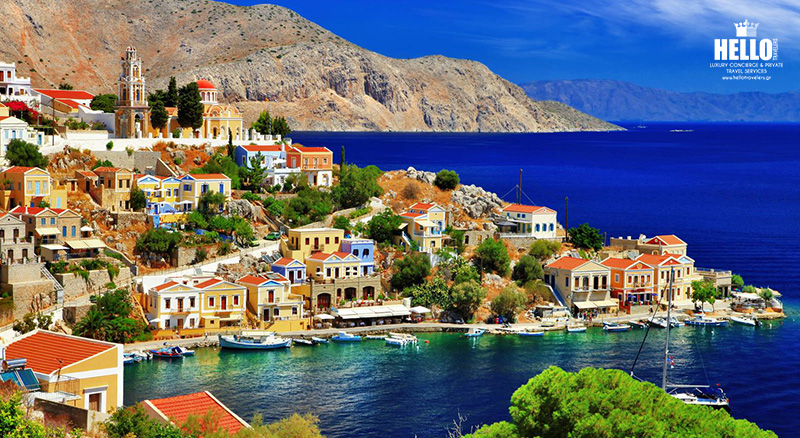
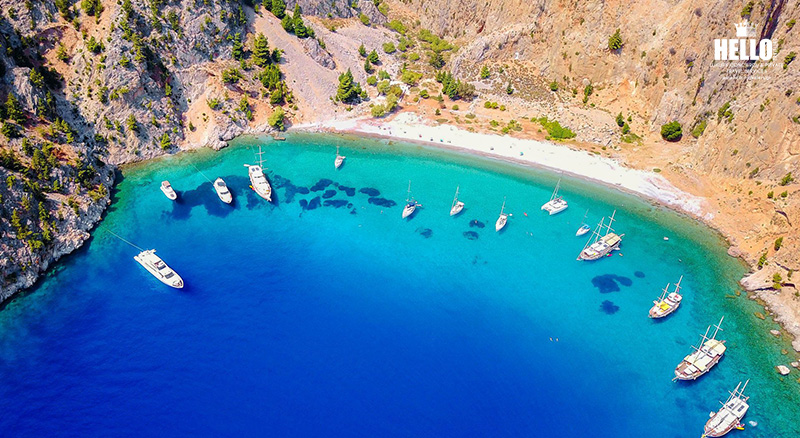
Little Symi has the prettiest port in Greece. As you round the headland, neoclassical mansions in every shade of apricot and peach rise like a mirage from the sea. Built by 19th-century sponge and spice merchants, the whole town is now a national monument. You need strong legs to explore – it’s about 500 steps up to the crumbling acropolis – but you won’t need a car. The only proper road peters out at Panormitis monastery, a major pilgrimage site. Ravishing beaches such as Ayios Yorgos Disalonas (backed by monumental cliffs) and Marathounda (where goats will try to filch your picnic) are only accessible by boat or on foot. In the rugged hinterland, more than 100 monasteries are hidden among the pine and cypress forests.
With its laid-back glamour, luminous sea and almost tropical microclimate, Symi is a hit with French and Italian yachties. You’ll find them eating flash-fried baby shrimp, a local specialty, at Tholos, a sensational taverna where the harbour views almost steal the show.
08. NAXOS
Best for: Endless sandy beaches
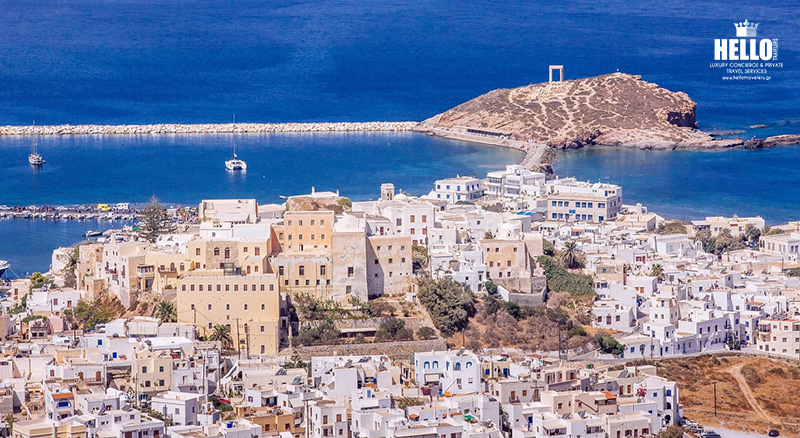

Naxiots once made considerable fortunes exporting potatoes, cheese, marble and emery. Locals bequeathed undesirable seaside plots – useless for farming – to their laziest offspring. When tourists cottoned on to the island’s scores of fabulous beaches, these wastrels found themselves sitting on gold mines. The west coast of Naxos is fringed with mile upon mile of powdery sands. Agios Prokopios and Agia Anna delight toddlers and teenagers alike with their shallow waters and beach bars. As you head south, the beaches get wilder: Plaka, where you can gallop across the dunes on horseback, Mikri Vigla for windsurfing and kitesurfing, and crystal-clear Kastraki.
Should you tire of frolicking on the shore, three supersized kouros statues are hidden in the hills and there are dozens of drowsy villages to explore. Try kitron, the local citron liqueur, at the Vallindras distillery in Halki or sample homemade wine and arseniko cheese under the plane trees in Ano Potamia village. No wonder Herodotus described Naxos as ‘the happiest of islands’.
09. ASTYPALEA
Best for: Escaping the crowds
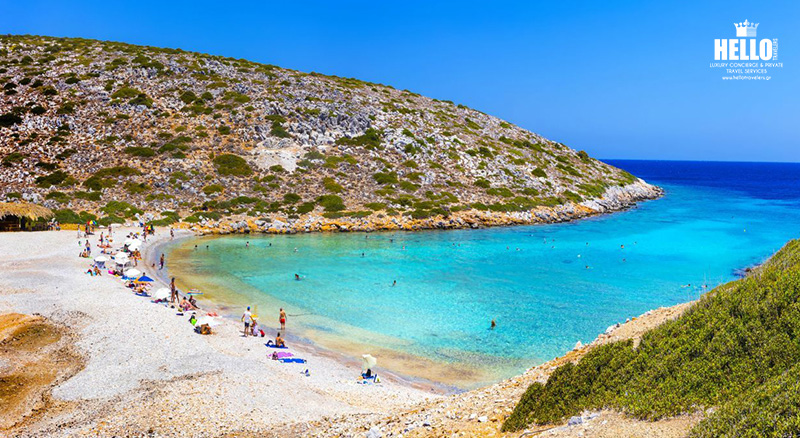
A throwback to a gentler, slower, more elemental way of life, Astypalea is surprisingly easy to get to (daily one-hour flights from Athens). Every gap in the burnished hills frames a different view of Hora, cascading from the Venetian castle to seaside Skala. The scent of saffron biscuits wafts through the whitewashed lanes. Tucked beneath the battlements, Castro bar has a magical terrace that seems to float above the archipelago.
The nearest beach is Livadi, a sort-of-resort surrounded by citrus orchards. The rest of the island is stark and wild. Treacherous tracks hurtle down to shingle bays such as Vatses, with a rocking beach bar, and Kaminakia, where Linda’s farm-to-table taverna serves the best roast goat in the Dodecanese. If you really want to be alone, rent a motorboat from Maltezana, an old-time fishing village, and putter to Koutsomiti and Kounoupes, tiny islands connected by a double-sided beach. At Vathy, a lagoon where erotic graffiti was etched into the rocks 2,500 years ago, the only taverna is called Galini (Peace). Which sums up Astypalea perfectly.
10. ZAKYNTHOS / ZANTE
The best Greek Island for: seaside holidays with toddlers or teens
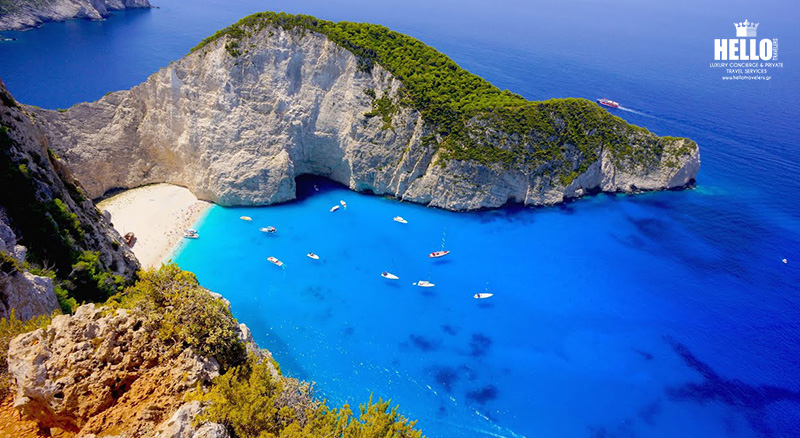
Zakynthos, or Zante, has shrugged off its reputation as a destination for lads on tour (as long as you avoid Lagana and the built-up south coast) by rebranding itself as Greece’s greenest island. It’s not just the emerald hills sliding into the electric blue Ionian: much of the south coast is a nature reserve where endangered loggerhead turtles hatch in the sand. The turtle beaches are off limits, but there are countless coves in every hue of green and blue. Favourites are tiny Xigia, with its bubbling underwater springs, and craggy Porto Limnionas, with sunbeds wedged between the rocks and palm-frond umbrellas positioned between the pine trees. Skinari is the starting point for boat trips to the most famous landmarks, the Blue Caves and Shipwreck Beach, where a rusting liner leans into the chalky cliffs. From Keri, you can cast away for Marathonisi island, another turtle sanctuary.
The mountainous interior, all sleepy stone villages poking out of pine forests, is great for hikes and bikes. (Eco Zante can arrange outdoor activities guided by insiders.) Askos Stone Park is a wildlife sanctuary inhabited by deer, chinchilla, and dozens of other species. After exploring the Venetian castle high above the harbour, treat the kids to thin-crust pizzas (with grown-up toppings like bresaola, aubergine, and gorgonzola) at Alesta on cute St Mark’s Square.
Recommended Hotel: Kalamaki Beach Hotel, Zakynthos
11. RHODES
Best for: Travelling back in time
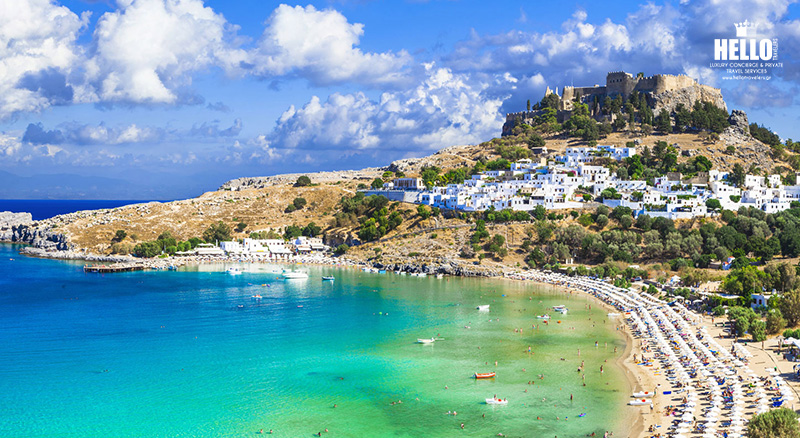
When the writer Lawrence Durrell arrived in Rhodes after World War II, he found an island devastated by centuries of crusaders and invaders. Like the fallen Colossus, it was ‘a Rhodes dispersed into a million fragments, waiting to be built up again.’ Since then, Rhodes has reinvented itself as one of Greece’s top travel destinations. The big draw is the medieval citadel in Rhodes Town: : stroll along the battlements and you’ll spy Byzantine churches, Roman ruins, synagogues and minarets. In the maze of alleys, seek out Marco Polo, a 15th-century guest-house decorated like a pasha’s harem, with an enchanting restaurant in the garden.
Upmarket hotels are clustered around Lindos, its magnificent acropolis surrounded by slate cliffs and emerald coves. Go for the views – and the sublime octopus ragout at Mavrikos restaurant.
As you head south, high-rise resorts give way to stretches of golden sand, such as Glystra, Tsambika, and Fourni. Inland, you’ll find alpine forests (Mount Attavyros), hilltop castles (Monolithos), faded frescoes (Agios Nikolaos Foundoukli) and ancient ruins (Kamiros). Marooned on the southern tip, Prasonisi is a powdery peninsula where the Aegean meets the Mediterranean. One side is calm, the other choppy – a metaphor for this island of two halves.
12. SKIATHOS
Best Greek island for: Flopping onto a sandy beach with a good book
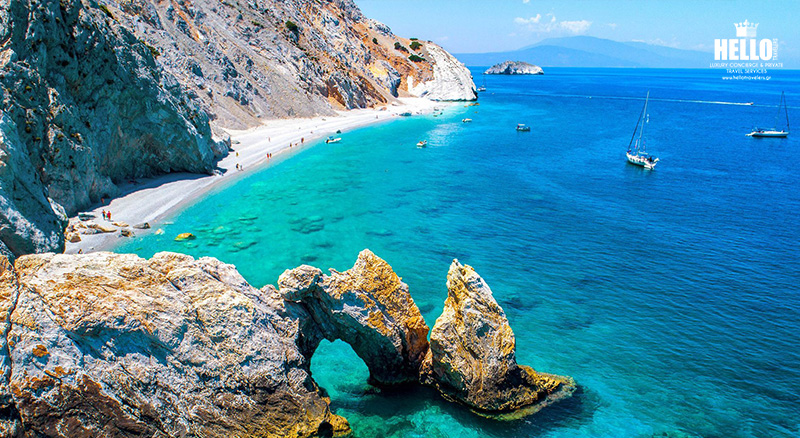
Skiathos may be the smallest of the Sporades islands, which counts among its number sleepy Alonnisos and the pretty Mamma Mia! location of Skopelos, but it’s by far the most popular, especially with families, who come for the baby powder-soft sandy beaches and laid-back vibe. The island has some of the finest beaches in Greece, with the tree-lined, turquoise-watered Koukounaries in the south the most celebrated and the busiest (forget about getting a sun lounger here in peak season). Those in the north of the island, which can only be accessed by a steep, winding drive through pine groves, are more rugged and windswept but no less idyllic – emerging onto Elia beach, with its crystal-clear sea and rickety wooden taverna, is like stepping into a little slice of paradise.
As dusk falls the town starts to liven up, with most of the action centred around Papadiamantis Street, the main shopping drag. Stroll down it on the way to dinner and browse smart boutiques selling handcrafted jewellery and knick-knacks, or pick up local delicacies from the upmarket Ergon deli, which also has outposts in Athens, Thessaloniki and Mayfair. The buzziest restaurants are clustered around the harbour, with Bourtzi, perched atop a tiny rocky island, the best spot for sundowner cocktails and The Windmill a favourite for elegant suppers. For the most charming setting, head to Sklithri and book one of the taverna’s tables right on the beach. Order an ice-cold Mythos beer, baked feta and a platter of perfectly-chargrilled and out-of-this-world delicious vegetables then watch the sun set over the Aegean, with your toes in the sand.
Recommended Restaurant: El Greco Restaurant, Skiathos, Sporades
13. LEFKADA
Best for: Sailors, surfers, and superstar beaches

Lefkada is something of an anomaly. Unlike the other Ionian islands, it’s accessible from the mainland via a causeway on the northern tip. It’s also easily reached from the UK, with direct flights to Preveza, a 40-minute drive. Lefkada’s main town, flattened by an earthquake in the 1950s, certainly won’t take your breath away, but those famous cliff-backed beaches, Egremni and Porto Katsiki, sure will. You’ll find sheltered beaches no matter which way the wind is blowing; but if you’re here for the swell, the south coast is fantastic for windsurfing (head to Vassiliki or Sivota, home to the world windsurfing championships) and Agios Ioannis bay billows with kite-surfers. At Nidri, ignore the unlovely bars and watersports centres, and hop on a boat to explore the little isles nearby. You can swim through sea caves on Kalamos; eat seared tuna with tarama at Errikos taverna on Meganisi, a favourite of reclusive billionaires; and watch the sunset with a basil-infused Mastiha and tonic at Mylos bar, a converted windmill on Kastos.
Want to cool down or escape the summer crowds? Drive through forests of chestnut and pine into Lefkada’s mountainous interior to the somnolent villages of Karya (home to an enchanting textile museum), Eglouvi (to play backgammon under plane trees) and Exanthia (to watch the setting sun from up in the clouds at Rachi restaurant). You might even see paragliders leaping off the mountain.
Where to Stay, Eat, Drink and Relax
Restaurants
Kyma Fish Restaurant, Frini Sto Molo Restaurant,
Hotel
Pirofani Boutique Hotel,
Relax
The House of Smile, Massage and Beauty,
Drink and Nightlife
Xartes All Day Coffee & Coctail Bar

